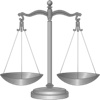Several Apple patents have appeared at the US Patent & Trademark Office. Here’s a summary of each.
Patent number 201004862 involves personalized streaming digital content. It’s for a method for generating personalized streaming content, the method including the steps of analyzing a digital library of a user associated with a user account, generating recommended digital media based on analysis of the digital library, generating personalized streaming content that includes digital media from the digital library and recommended digital media. The inventor is Rhan Graeme Dixon.
Patent number 2010049836 is for automatic configuration information generation for a distributed computing environment. A method and system for configuring information for a distributed computing environment is provided. The method and system comprises providing a job containing a list of tasks to a controller, the tasks including a bootstrap tool and configuration information related to the computer network. The method and system also comprises providing a task to each of a plurality of agents on the distributed computer network, each task being based on one of the tasks of the job. The method and system further comprises executing code by each of the plurality of agents based upon the tasks process, wherein the code provides configuration information for a master process and a plurality of slave processes within the distributed computer network. The present invention allows processes run on a distributed set of computers to be provided with appropriate configuration files without requiring the master node to pre-generate those files ahead of time. Specifically, the invention generates the configuration files on the computers that will host the processes. A special bootstrap tool is run on each machine. This tool provides a unique identifier to each process. Each machine running a slave process sends the master process its address, and the master returns a port number. The inventor is David A. Kramer.
Patent number 2010049350 is for a method and system for transferring stored data between a media player and an accessory. It involves techniques for transferring stored data between a media player and an accessory. In one set of embodiments, one of the media player and the accessory can obtain a unique identifier for a particular file stored in the other of the media player and the accessory. The one of the media player and the accessory can then retrieve data from the stored file using the unique identifier. In certain embodiments, accessories and media players can retrieve and store data utilizing an arbitrary format. This data can be opaque to any protocol used by the media player or accessory and can require no parsing or interpretation. To provide this facility, a plurality of commands can allow both media players and accessories to present a simple file system. The plurality of commands can be utilized in a variety of environments. The inventors are Jay S. Laefer, Scott Krueger and Gregory T. Lydon.
Patent number 2010049720 involves, among other things, methods, systems and computer program products are disclosed for synching data with one or more servers. One or more data resources are received. A version number and a unique identifier are assigned to each data resource not already assigned to an existing unique identifier. When one or more modifications to the one or more uniquely identified data resources are detected, the assigned version number is updated for the modified data resource. The inventors are Christopher Brooke Sharp and John B. Baumgarten.
Patent number 2010046766 involves the adjustment of acoustic properties based on proximity detection. Per the patent, one or more acoustic transducers of a device may be adjusted based on automatic detection of device proximity to the user. In a mobile telephone, when the user is using the receiver and holding the telephone against his/her ear, if the telephone detects that the user has moved the telephone further from his/her ear, the telephone will raise the receiver volume. Similarly, if the user is using the speaker, the telephone will adjust the speaker volume as user distance from the telephone changes. In another embodiment the telephone may fade between the receiver and the speaker. Volume is not the only acoustic property that could be adjusted according to user proximity. Frequency response is another property that could be adjusted, such as using appropriate electronic filtering, or by turning on another transducer that is not otherwise being used. The inventors are Justin Gregg, Michael M. Lee and Chad Sequin.
Patent number 2010046771 is for a multiple-use acoustic port. Per the patent, two or more acoustic transducers share the same acoustic port in a device. The acoustic properties–such as acoustic impedance and frequency response–of the shared acoustic port are matched to each of the two or more acoustic transducers. To accomplish acoustic impedance matching, a separate back volume is provided for each of the acoustic transducers, matched to that transducer. Frequency response matching can be accomplished by the design of the transducer itself, but also by providing an adjacent element in the acoustic system of the transducer. One transducer may serve as an element in the acoustic system of another transducer. Frequency response adjustment of an individual element may also affect acoustic impedance of the entire port-transducer system. The inventors are Justin Gregg, Michael M. lee and Chad Sequin.
Patent number 2010044067 is for a flexible shielded cable. The cable may include a plurality of conductors formed on a common base, a dielectric material disposed about the plurality of conductors, and a shielding material disposed adjacent the dielectric material. At least one of the plurality of conductors may include an unshielded portion not overlaid by the shielding material and at least one of the plurality of conductors may include a shielded portion overlaid by the shielding material. The inventors are Suinin Willliam Wong and Cheung-Wi Lam.
Patent number 2010045643 involves a method and apparatus for analyzing circuit operations. The invention is for a method and apparatus for viewing and/or analyzing the operations and logical states of an integrated circuit. The logical state of various flip-flops within the ASIC may be determined at a specified time. The embodiment may store these flip-flop states in a computer-readable data structure, such as a file or database. By repeating this process and incrementing or decrementing the time with each repetition, a more complete picture of the ASIC’s operation may be captured. Additionally, the embodiment may graphically display the flip-flop states, for example as a graph or waveform. The inventors are Robert L. Bailey and Brian D. Howard.
Patent number 2010049951 involves running-and, running-or, running-xor, and running-multiply instructions for processing vectors. The described embodiments provide a processor for generating a result vector with shifted values. During operation, the processor receives a first input vector, a second input vector, and a control vector. When generating the result vector, the processor first captures a base value from a key element position in the second input vector. The processor then writes the product of the base value and values from relevant elements in the first input vector into selected elements in the result vector. In addition, a predicate vector can be used to control the values that are written to the result vector. The inventors are Jeffry E. Gonion and Keith E. Diefendorff.
Patent number 2010049950 involves running-sum instructions for processing vectors. The described embodiments provide a processor for generating a result vector with summed values from a first input vector. During operation, the processor receives the first input vector, a second input vector, and a control vector. When generating the result vector, the processor first captures a base value from a key element in the second input vector. The processor then writes the sum of the base value and values from relevant elements in the first input vector into selected elements in the result vector. In addition, a predicate vector can be used to control the values that are written to the result vector. The inventors are Jeffry E. Gonion and Keith E. Diefendorff.



